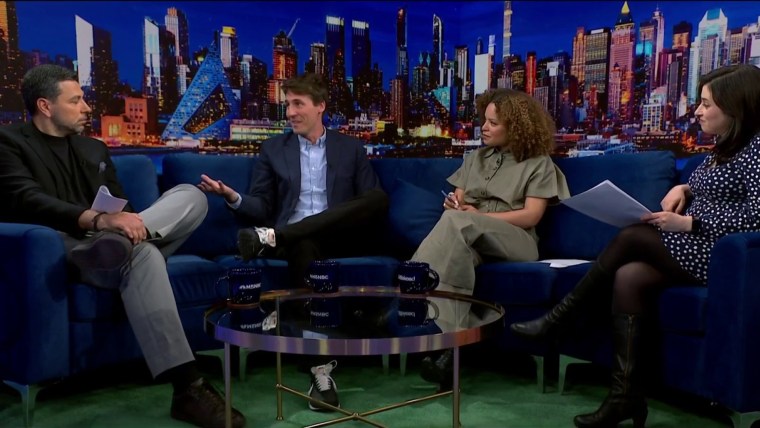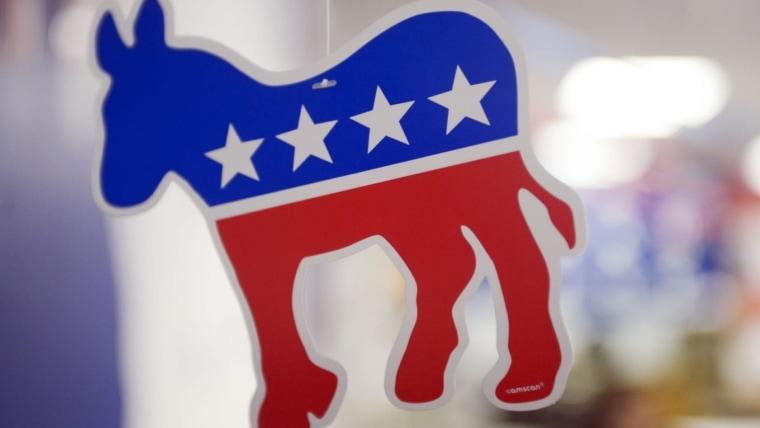After losing big with men under 30 in the 2024 election, Democrats have spent $20 million on a program called “Speaking with American Men” (SAM) to help figure out which “spaces” they need to show up in to fare better with this demographic. A smart place to start would be the gym; the booming men’s fitness market is expected to more than double by 2029, growth driven by men under 25, who are joining gyms almost twice as fast as women. And as SAM co-director Ilyse Hogue and I wrote here last year, the right has done an excellent job parlaying young men’s healthy interest in exercise into an embrace of reactionary politics.
The right has done an excellent job parlaying young men’s healthy interest in exercise into an embrace of reactionary politics.
But it doesn’t need to be that way. Across the political spectrum, craving the surefire sense of accomplishment the gym provides is an age-old response to an unstable political and economic environment. And historically, championing physical fitness with appeals to American manliness has not been a partisan issue. If the SAM initiative is going to net the Democrats more than online snark, its leaders should appreciate that this history suggests the party’s path forward might just begin at the gym.
In the vast digital universe targeting young men, the idea that exercise is imperative to self-actualization is inescapable. It’s most obvious in fitness-focused influencers like Ashton Hall, whose six-hour “morning routine” recently racked up nearly a billion views on X. But plenty of public figures with grander concerns insist exercise is integral to achievement. Take Andrew Tate’s obsession with “plummeting masculinity” or Robert F. Kennedy Jr.’s quest to make America healthy again.
A commitment to early-morning workouts, Tate advises, is Step 1 to asserting alpha dominance. Performing pullups, as the septuagenarian Kennedy does shirtless at Gold’s Gym, is proof of political power. Such encouragement spans the political spectrum. While it’s become more common to see Republicans like Paul Ryan or Pete Hegseth flaunting their fitness, Presidents Barack Obama and Joe Biden often promoted exercise as a personal and policy priority, and former Rep. Jamaal Bowman went viral in 2023 for benching 405 pounds while wearing a Working Families Party T-shirt. Online, progressive streamer Hasan Piker expounds on his diet and fitness regimen as readily as he opines on capitalism and climate change. He recently met up with fellow streamer and “big Trump guy” Bradley Martyn at a rare site of common ground: the weight room.
When Piker, with mock seriousness, announced to his followers that he and Martyn hoped to inspire “the young men out there who are lost — who feel anchorless, rudderless — by lifting some heavy weights,” he articulated an idea that long predates the so-called right-wing “manosphere.” For more than a century, in moments of upheaval that raise questions about what it means to be a man, men have reliably sought a sense of agency in exercise.
The social and economic roots of the American man’s fixation on fitness date to the early 20th century.
When the world feels confusing or out of control, make a man of yourself, beginning with your body is an especially enticing proposition. If, despite one’s best efforts, landing a rewarding career or a loving mate proves elusive, then why not capture a sense of self-efficacy at the squat rack? Jeff Bezos and Mark Zuckerberg’s billions may be out of reach, but attaining their newly sculpted bodies only takes some discipline and protein shakes.
The social and economic roots of the American man’s fixation on fitness date to the early 20th century. As urbanization and compulsory education laws kept middle-class, mostly white boys in schools staffed by women, psychologist G. Stanley Hall worried in 1904 that they were being weakened by the “social instincts of girls” and prescribed rough sports such as wrestling and boxing to counter what he called the dangerous “repressions of modern life.”
Although the white-collar careers to which upwardly mobile young men aspired conferred superiority over the sweaty masses, this prestige came at a cost: so-called “desk diseases,” as 19th-century doctors styled them, marked by sloped shoulders and sagging paunches. And President Teddy Roosevelt touted “the strenuous life” as a way for young men to resolve the paradox of progress.

During the Depression, as men of all classes reckoned with the emasculation of joblessness, bodybuilder and entrepreneur Charles Atlas successfully peddled an inexpensive mail-order muscle-building regimen that promised to unlock “he-man living” and “make you a new man.” To combat concerns at the time that caring for one’s body and appearance was somehow effeminate, Atlas promised men that a muscular physique would inspire adoration in women and command the respect and fear of other men.
The unprecedented prosperity of the 1950s, with its many desk jobs, televisions and time-saving appliances, ushered in yet more anxiety about the softening of the American male — among members of both major political parties. Worried that the sudden glut of leisure risked rendering boys unfit for military duty, Republican President Dwight D. Eisenhower’s administration launched what would become the Presidential Council on Youth Fitness in 1957. “We are not a nation of softies,” Vice President Richard Nixon warned at its launch, “but we could become one.”
We are not a nation of softies, but we could become one.
vice president richard nixon
In the December 1960 issue of Sports Illustrated, President-elect John F. Kennedy, a Democrat, amplified this concern that “soft Americans” who languished on the sofa, or as spectators in the stands, represented a national security and a moral hazard. A vigorous American man, he insisted, must be on the move — a lesson he reinforced in countless photos of him swimming, sailing, tossing a football or challenging the military (and his brother Robert) to hike 50 miles in 20 hours.
The tumult of the 1970s, with its “stagflation,” second-wave feminism and general loss of faith in government and the military coincided with another wave of male fitness boosterism. “If neither our doctors nor the government can be expected to bring us good health, to whom can we look?” wrote running proselytizer Jim Fixx in his 1977 bestseller “The Complete Book of Running.” “The answer is plain: to ourselves.”

Given the many physical and mental benefits of exercise, the latest push for men to self-actualize through fitness is hardly a negative — or necessarily partisan — development. Experts agree that exercise is close to a “magic pill” for its many health benefits. Gyms have also never been more inclusive: Weight rooms welcome women and men frequent studio classes. It’s progress, surely, that no one needs the reassurance Arnold Schwarzenegger offered in 1977, that “men shouldn’t feel like f--s just because they want to have nice-looking bodies.”
Yet destabilizing moments like the one we are now living through reveal an enduring dynamic: Men are encouraged with particular urgency to get moving when their social status feels in flux. Generation after generation, boosters sell men the irresistible idea that at the gym, if nowhere else, the sweat of your brow is all that stands between you and success. It’s an understandable, even healthy impulse, and Democrats would do well to start rebuilding their political muscle quite literally, by seeking to identify with the guy at the gym.
